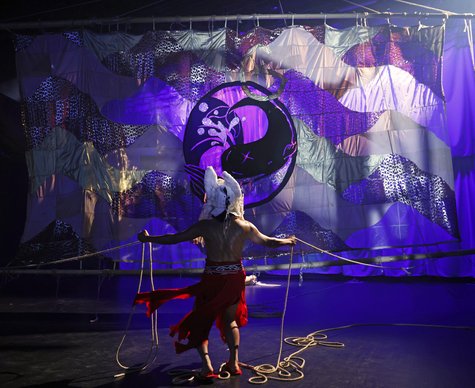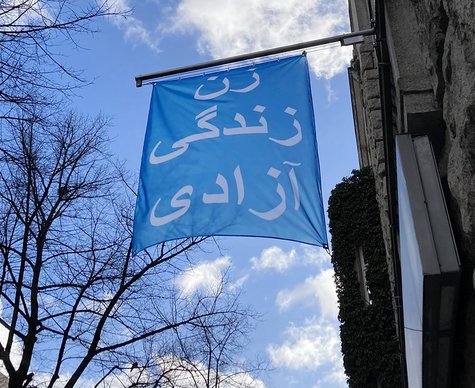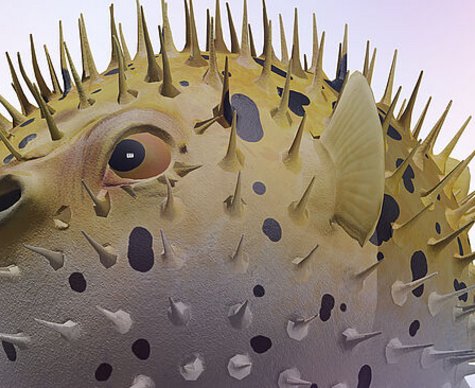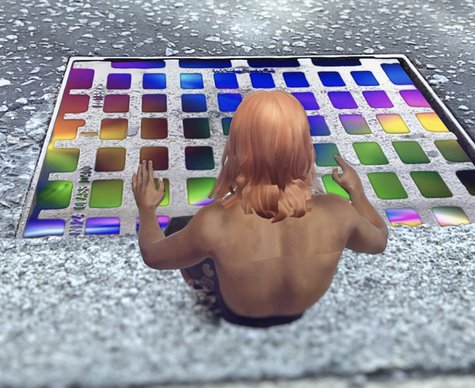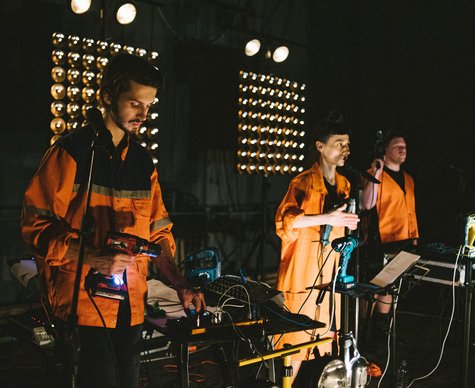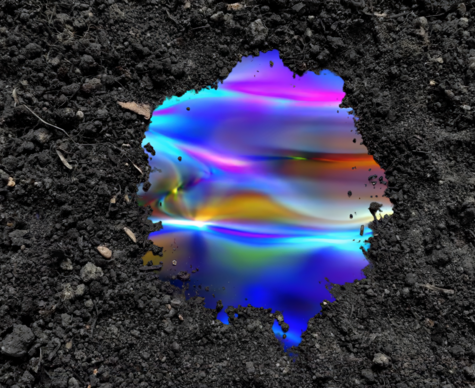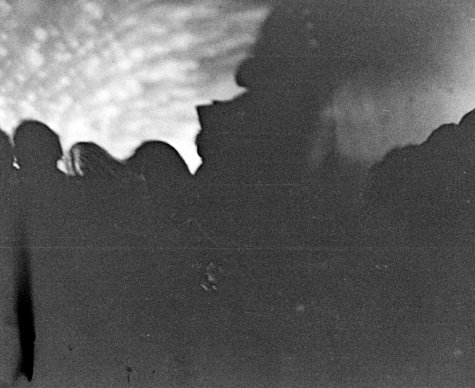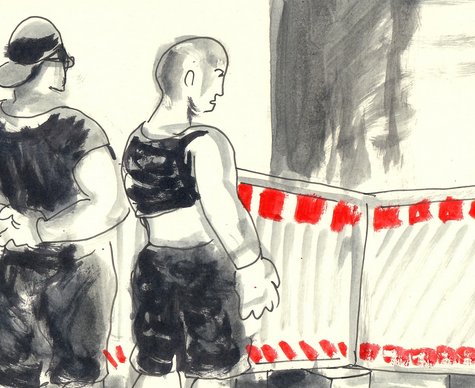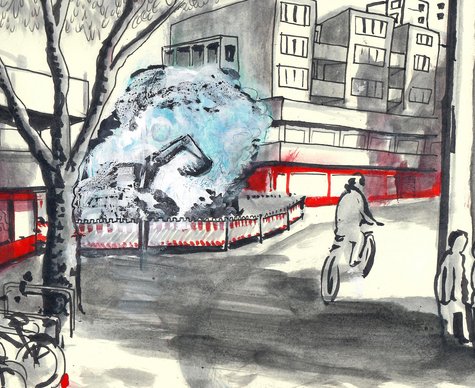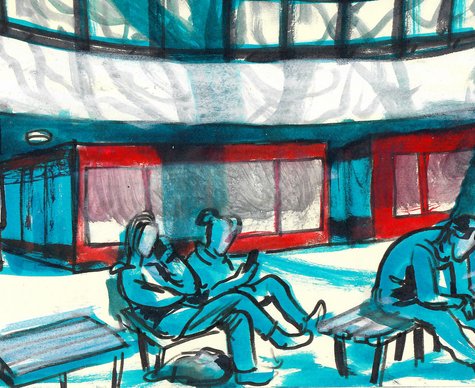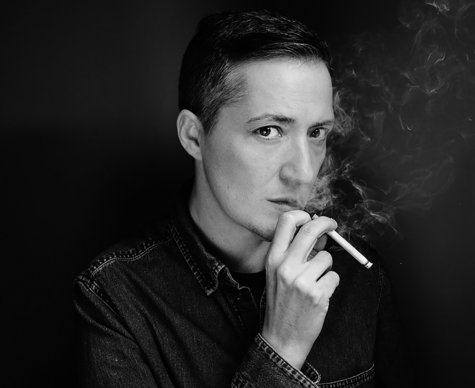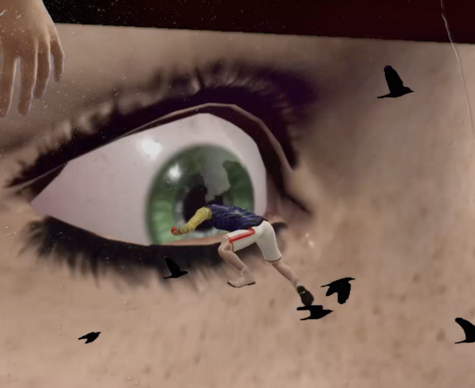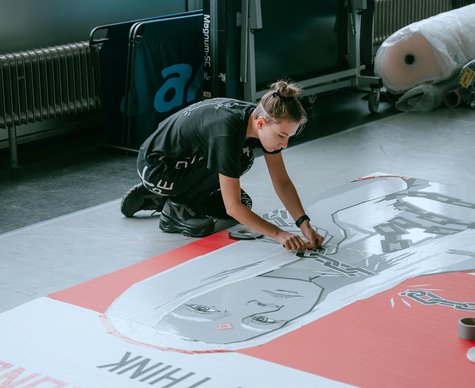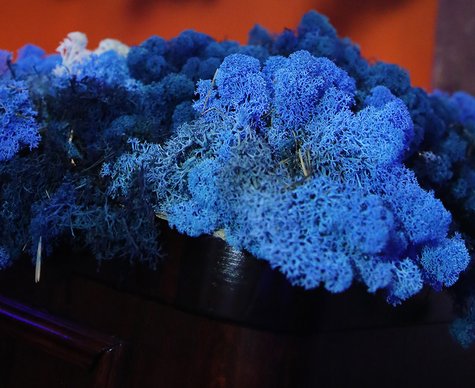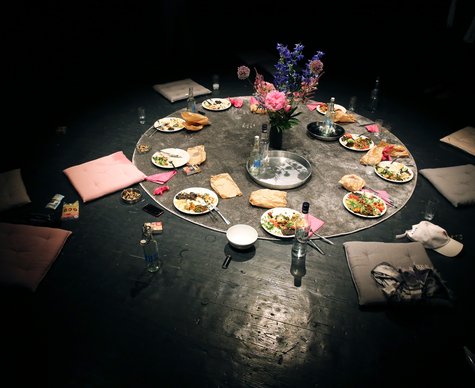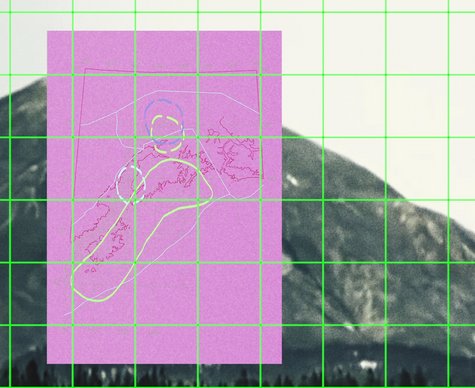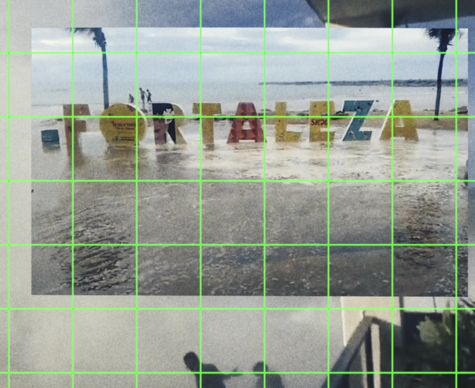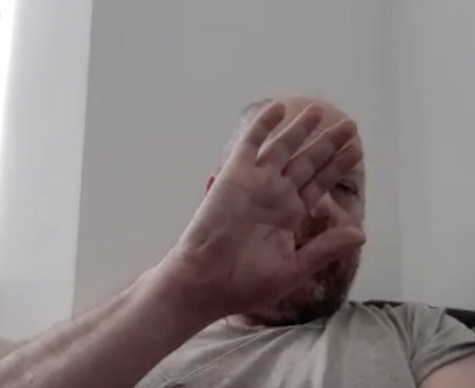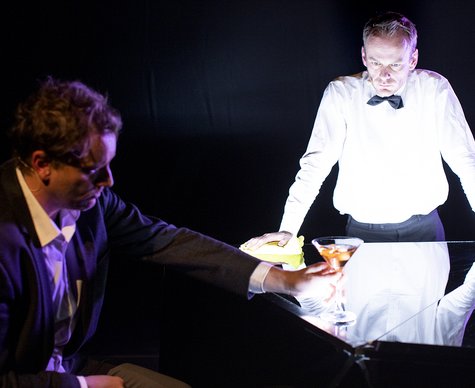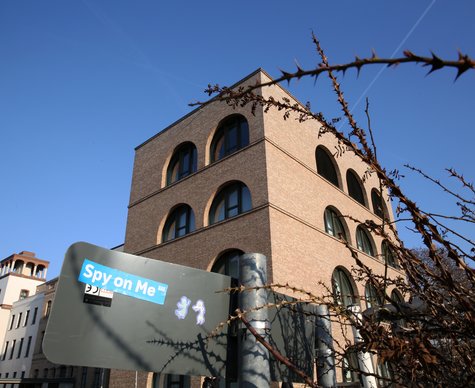By: ::vtol::
::vtol::
Electrification
Part of the Festival “Utopian Realities – 100 Years of Now with Alexandra Kollontai”
- Installation

Each of 7 objects represent and abstract fantasy and reflection which use recognisable images, objects or artefacts. Some of the objects suggest interaction with spectator, others are autonomous. Each of them is constructing an illusion of imaginary utopian reality, in which they act as independent cybernetic creatures.
The following descriptions of the objects are written by the media artist Dmitry Morozov alias ::vtot::.
turbulence, 2016
This is a small flock of eight bird automatons. Initially this project was designed and carried out for an exhibition at the operational factory. The concept proposed the birds being mysterious alternative forms of extraterrestrial mechanical life.They were so naïve to end up in workshops that bore a resemblance to their home grounds. They were caught up in workshop mechanisms and utility communications, quivered helplessly, trying to fly away. Later on, they succeeded and now, finally free and unbound, they participate in my exhibitions, with the pack or individually.
All the birds have the same mechanical structure and way of communication; still every one of them has its different voice and manner of flying. The voice bases on the feedback. The pitch of tone and the tone quality varies as the beak with the microphone changes its location. The birds continually communicate with each other; transmit messages about danger or information on spotted metallic objects that they feed on.
collector, 2016
The object records sounds from the surrounding space, selecting only the loudest ones (those which exceed a certain level). Then, the machine puts together a composition consisting of these sounds organised in the order they were recorded. In fact, the object excludes the silence and composes the music from the surrounding sounds, while compressing the time. The voices, music, city sounds and other random noise are shaped into complex algorithmic compositions, which can be played after it has collected enough of them. It is a kind of reality re-mixer - by simply removing the silence and pauses between loud sounds and words, it creates the sense of very rhythmical and organised aural experience, which sounds very musical to me.
The process has two phases, recording and playback. In the first phase, it records the surrounding sounds until it has gathered 100 samples. In the second phase, the object plays the resulting compositions as a loop through speakers for 1 minute, so that the compositions can be heard by everyone around. In this mode, the recording stops. After that, it erases all sounds and begins a new search.
The object itself is a robot with a rotating stereo microphone, which tends to activate with the help of a motor towards the loudest sounds in the surrounding space. It also has 2 speakers to present the results, and a light torch to show the detected sounds or indicate the sounds during playback mode.
hotspot poet, 2016
Autonomous micro-device which distributes wi-fi masked as wireless network, visible at any gadget such as a smartphone or a laptop. The device is automatically renaming its network every 10 seconds, taking as its name various lines of poems by famous poets. The device is using an information channel which is accessible and visible to everyone through mobile devices, thus being a non-standard transmitter of poetry. There is no possibility to connect to this network (which is actually a dummy disconnected from Internet) - the message being the name of the network. If one would leave the wi-fi settings menu open, then gradually, line by line, all the poems programmed into the object will be revealed.
There are 4 objects in the set, each of them contains poems of one of the poets: Basho, Goethe, Pasternak and Petrarka. In fact, the apparatus is an ironic device in the spirit of hacktivism, searching for alternative ways of distribution of information in the public spaces. Theoretically, these devices can be programmed to transmit messages with any content, they will be visible in a certain space and will be refreshed even if the whole country is disconnected from Internet. These devices can be also called generators of network/information noise which displaces the real network by a fake one, but with a certain aesthetic aim. Radius of action of the module is a few dozens meters. The names of networks are shown in a bit different ways on different gadgets: for example, on certain modern android devices, poetic lines are visible only as one network, which is continuously and quickly refreshed; on ios devices there appears a new one, while a few previous ones are still visible, but gradually the new ones repehe old ones; and on mac computers, all names are appearing line after line, and they stay there until the arrow is removed from the network selection menu.
prankophone, 2015
Prankophoneis a sound object being a hybrid of synthesizer, telephone and logic module. The main principle of the object’s functioning is as follows: depending on the current mode, the apparatus calls to random or pre-defined recipients and plays them algorithmic melodies created from their phone numbers. The speakers transmit both the synthesized sounds and the sound from answering person. The common sound layer is involving a random recipient who doesn’t suspect anything. The person who answers the phone can’t hear any other sounds except for the synthesized ones. Nowadays it’s averting to hear in the phone receiver any sound other than human voice – music means that we have to wait for the answer of the operator, strange electronic noises imply some mistake in decoding. Thus the sound from Prankophone would be perceived as some kind of mistake, though in reality it is an individual and anonymous sound message, a micro-noise piece which is unique for each number it managed to reach.
The apparatus features 4 modes of functioning:
-Autonomous mode, in which it generates thenumbers by itself and tries to reach them, and play them the sounds.
-Manualmode, which allows to dial any number by pressing standard phone keys. Thephone number is further automatically transformed into sounds.
-Keyboard mode –mode of dialing the number on the one octave keyboard where 10 keys correspond to 10 digits.
-Live mode – the number is defined by any of the previous methods, but the sounds are reproduced not automatically but from the keyboard, thus the user may “communicate” through sound with the person who answered. The system of automatic generation of numbers may be calibrated depending on the region, or there is also the international mode which takes into account the phone codes, length of numbers and other parameters.
volnovod, 2016
I’ve came up with the idea of this device during a long flight, when my iPod earbuds (the standard white ones) got caught up yet again. The wires of this manufacturer are covered with special rubber that grants the earbuds a unique feature: they do not fracture or bend; they just intertwine endlessly, which prolongs their lifespan and prevents contact damage. Therefore, in a typical coincidence, my wire intertwined many times and I noticed that it resembled a complex multidimensional wave. The concept of the machine came across my mind at once: a machine that would deliberately intertwine this kind of wire in different ways, then a camera would digitize it and a special algorithm would transform the result in a parametric graph controlling different parameters of sound synthesis. The device ‘Volnovod’ is a result. I think of this device as a hybrid machine, which combines a kinetic sound sculpture and a unique controller/tool. It bases on the concept of some small phenomenon being adapted, raised and automatized.Thus, a very peculiar for me combination of a tangible wave and depending on it soundwaves worked out. The device operates in automatic mode, semi-automatic mode or manual mode. Two stepper motors constantly turnand intertwine the wire, moulding different types of waves. Motors operate in accordance with the random numbers basedprogram and randomly change the direction. Still they rotate within the preset number of steps range to prevent the wire from over-intertwining. The camera shoots a wire in front of a black background, which makes possible to achieve the highest picture contrast. Nine wave pictures are saved. Later they can be updated in automatic mode or refiled manually in semi-automatic mode or manual mode. These nine shots then morph into graphic tables with resolution of 270 x 240 points. The tables are the base to control sound synthesis options. The program can generate parameters in any suitable format: MIDI, OSC, CV. It allows to use it freely as within the system as with external devices. Graphs reading can be written down automatically or manually, with different velocity in many directions. The wave form can also put to use as a harmonic oscillator wave (akin to wavetable synthesis).
ra, 2015
Ra is a sound object / synthesizer which uses laser for scanning the irregularities of the surface of the pyrite disc and further transforms this data to produce sound. Pyrite disc is a rare form of pyrite which is crystallised in radial shape (as unusual disc spherulites) which also was named ‘pyrite suns’ or ‘pyrite dollars’. The only deposit where pyrites of such morphology are found is in Illinois state (USA). Pyrite suns were formed around 300 million years ago.This project originated as a result of an interesting set of circumstances – a pyrite disc was given to me as a gift by a mineral seller in Boulder city (USA). Upon hearing about my works, she asked to do something with such crystal, and refused to take payment for getting it. In the same period, I was reading articles on various ways of archiving and preservation of sounds from the first, historical sources of the recorded sound – wax discs and other fragile carriers. All technologies were based on the usage of lasers. Inspired by these projects, I set out to create a self-made laser sound reader which would be able to produce sound from various uneven surfaces, using minimal resources to achive it. Thus emerged the idea to construct an instrument using the pyrite disc and a self-made laser sound reader. I consider this object to be a landmark for me, as it united several practices and technical skills which I was working on in the last years - as well as the new resources and ideas which I approach for the first time. I.e. – creation of the synthesizers and sound objects, collecting minerals, topic of rotation, Pure Data programming, Arduino and Python, working with servo and stepper motors, raspberry pi and lasers, etc. What is also important for me in this project is adressing the topic of occult futurology as a concept which corresponds in the best way my own artistic practices. In the first place, it can be seen in how Ra works with the perception of time – having pre-historic “unearthly” mineral as its base, it adresses medieval times through the notion of alchemy; it also carries Bach organ motives, further bringing us to the echoes of the electronic instruments of middle of the 20th century, underlining all of this with lasers, code, noise and autonomy, all brought up in handicraft conditions.
turbo-gusli, 2014
«turbo-gusli» or «gusli-samogudy»
gusli robot - russian folk bot, portable electro-acoustic orchestra
«gusli-samogudy» means self playing gusli, and it is a very common charter in old russian fairy tales - so by making it robotized I made fairy tale come true.
Cast
Dates
Credits
A project by ::vtol::
Presentation in the frame of "Utopian Realities", a co-production of HAU Hebbel am Ufer and Haus der Kulturen der Welt as part of "100 Years of Now", curated by HAU Hebbel am Ufer. Funded by the Federal Government Commissioner for Culture and the Media.
![[Translate to EN:]](/fileadmin/Hau/_processed_/3/d/csm_Beauftragte_der_Bundesregierung_fu__r_Kultur_und_Medien_Logo_45d31b5c73.png)
Location
HAU2
Hallesches Ufer 34, 10963 BerlinThere are two marked parking spots in front of the building. Barrier-free restroom facilities are available. Four relaxed seats are available in the first row of HAU2. Tickets for wheelchair users and accompanying persons can also be booked via the ticketing system. If you need help, please contact our Ticketing & Service team at +49 (0)30 259004-27 or send us an email to
tickets@hebbel-am-ufer.de.
Latest information for arrival:
There is currently a construction site on Hallesches Ufer between Wilhelmstraße and Möckernbrücke underground station. There is a divided replacement route for pedestrians (right) and cyclists (left), which are separated by a yellow ground line. The carriageway is narrowed to one lane.
Travelling to HAU2 via U Hallesches Tor:
If you are coming from Hallesches Tor underground station, you will have to use an alternative footpath from Wilhelmstraße / Hallesches Ufer junction, which is separated from the carriageway by a construction fence – the actual footpath is currently closed. Please note: the alternative route is also used by cyclists. Pedestrians should keep to the right. We therefore currently recommend that visually impaired or blind visitors come to the HAU with an accompanying person.
Arrival HAU2 via U Möckernbrücke:
When you leave Möckernbrücke underground station, please stay on the footpath on the canal side until you reach Hallesches Ufer / Großbeerenstraße junction – the opposite side is currently closed due to construction work.






















